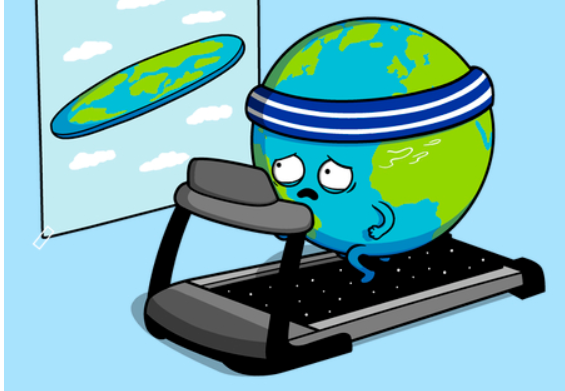While most assume that a day lasts 24 hours, this is not entirely true. Scientists believe that the Earth is spinning faster than it has in 50 years, and as a result, each day in 2021 may be infinitesimally shorter.
To understand why this is, it is important to know how the duration of Earth’s full rotation is measured. The Earth follows an elliptical motion around the Sun, completing one full rotation about its axis every 24 hours, or 86,400 seconds. Atomic clocks—highly precise time-measuring instruments—have shown that this value is usually off by a few milliseconds due to variations in Earth’s rotational speed from one year to the next. This is caused by changes in angular momentum, a measure of a body’s spin with respect to its mass, velocity, and radius.
Olivia Jensen, professor in the Department of Earth and Planetary Sciences at McGill, is a geophysicist who studies the mechanics and dynamics of the Earth.
“On short time scales, the length of day increases due to the loss of angular momentum and the redistribution of mass within and over the Earth,” Jensen wrote in an email to The McGill Tribune. “It is not a regular increase.”
In the past decades, the Earth’s rotation about its axis has been slowing down, causing days to last longer than the conventional 24 hours. The moon’s gravitational pull is responsible for this deceleration; tidal forces caused by the moon induce a frictional force that slows down the Earth’s rotation. This difference amounts to one second every one and a half years, allowing scientists to introduce the “leap second.” Just as leap days are used every four years to adjust for the Earth’s rotation around the sun, a leap second is added to accommodate the delayed time it takes for the Earth to spin about its axis.
Although adding this leap second would go unnoticed by the average person, it is considered essential for the Global Positioning System (GPS) and the stock market—where trades occur every fraction of a second—to operate accurately. Additionally, it is key to researchers working in astronomy.
However, this year is different. Recent findings have shown that the Earth will spin faster than it did five decades ago, urging scientists to consider the need for a “negative leap second.” Adding a negative leap second to the global clock would mean that the last day of 2021 would end at 23:59:58 rather than 23:59:59 in all time zones. Some experts, including Jensen, believe this change would be premature.
“I suggest that there will be no need for inserting a negative leap second unless this (faster) rotation continues for years,’’ Jensen wrote.
Studies suggest that this increase in Earth’s rotation speed may be linked to climate change. The increased temperature caused by global warming melts the ice sheets in the geographic North and South Pole, producing excess water. This mass of water redistributes itself along Earth’s axis, resulting in a faster rotation similar to ice skaters who speed up as they wrap their arms around their body. However, this is not the only way in which the weather could influence the Earth’s rotation speed.
“It is the moment of inertia about the rotation axis that determines the free spin of the Earth,” Jensen wrote. “Major mass redistribution caused by extremely large earthquakes (larger than any so-far seen) could change the spin rate.”
Although 2021 may become the shortest year ever recorded in half a century, a negative leap second would not necessarily be applied this year. If it were implemented, it would be the first negative leap second added in history.








